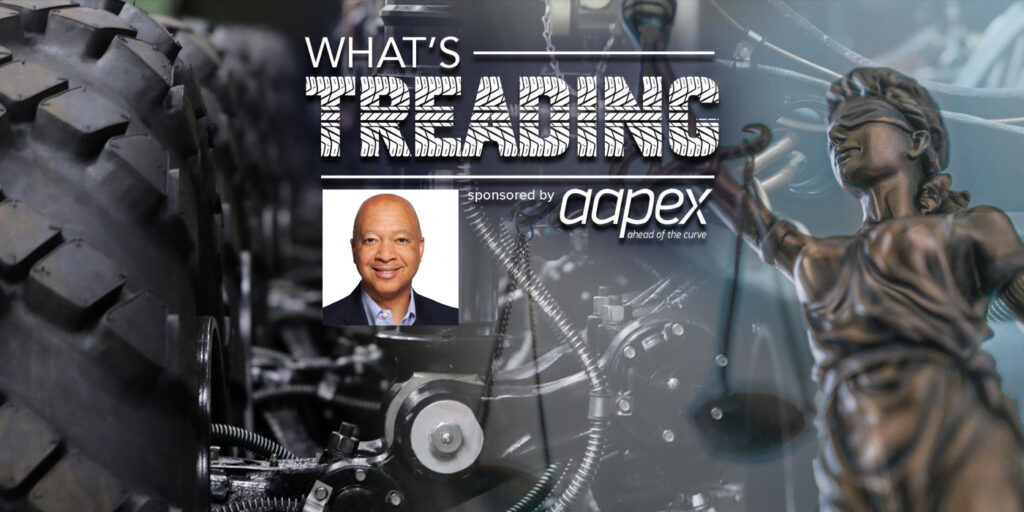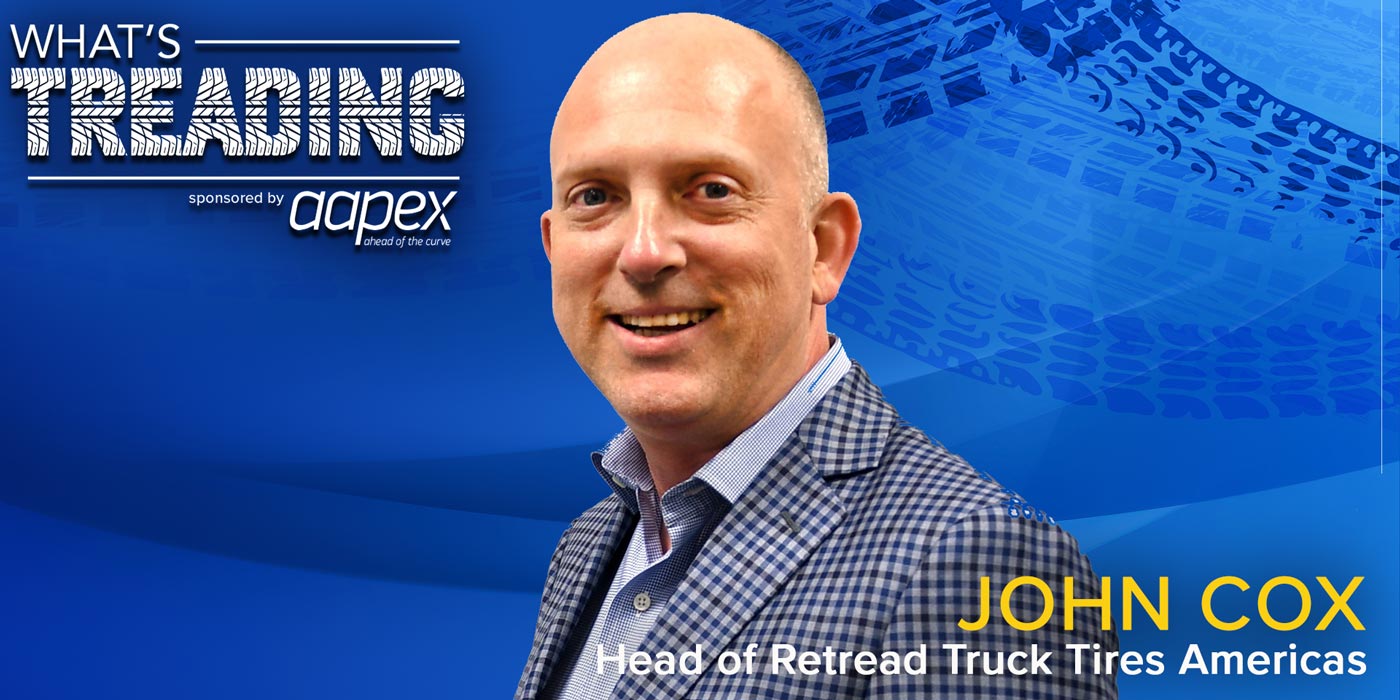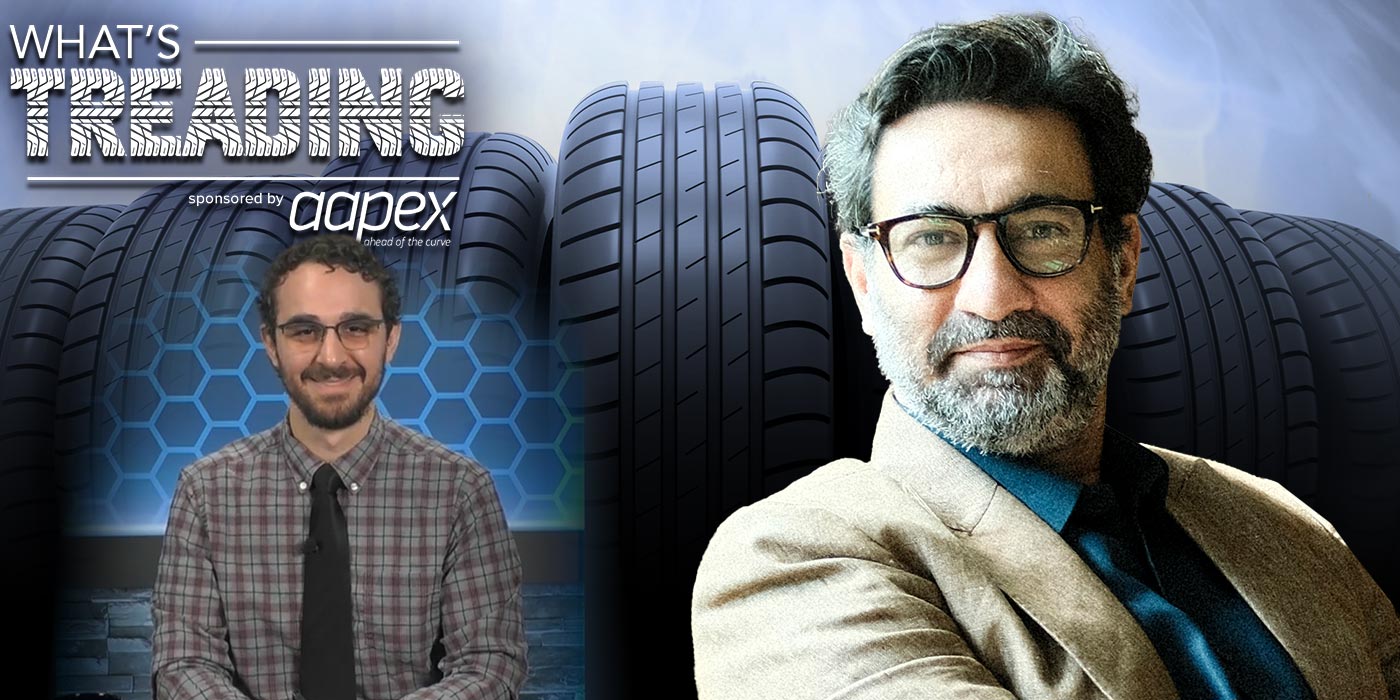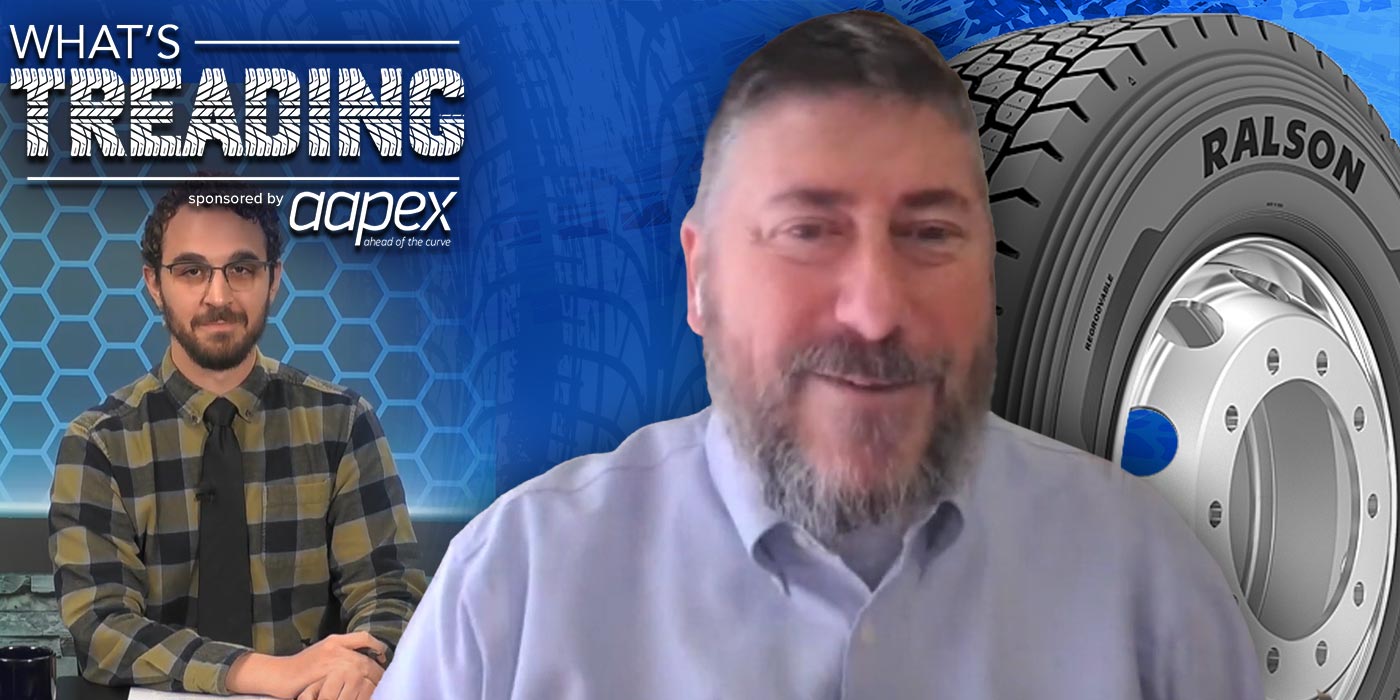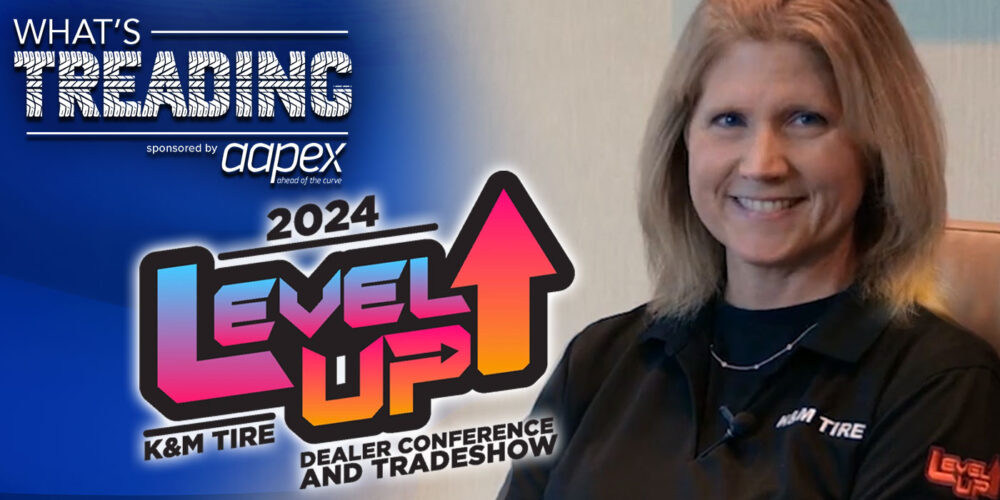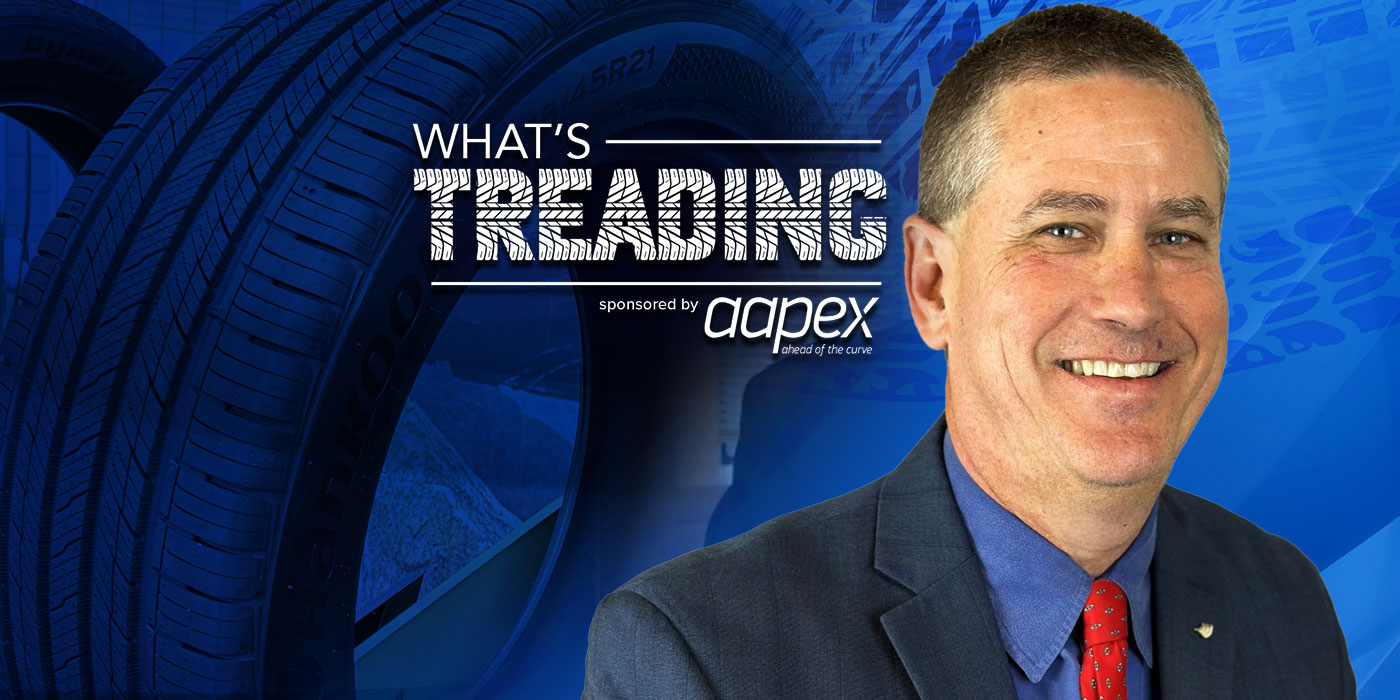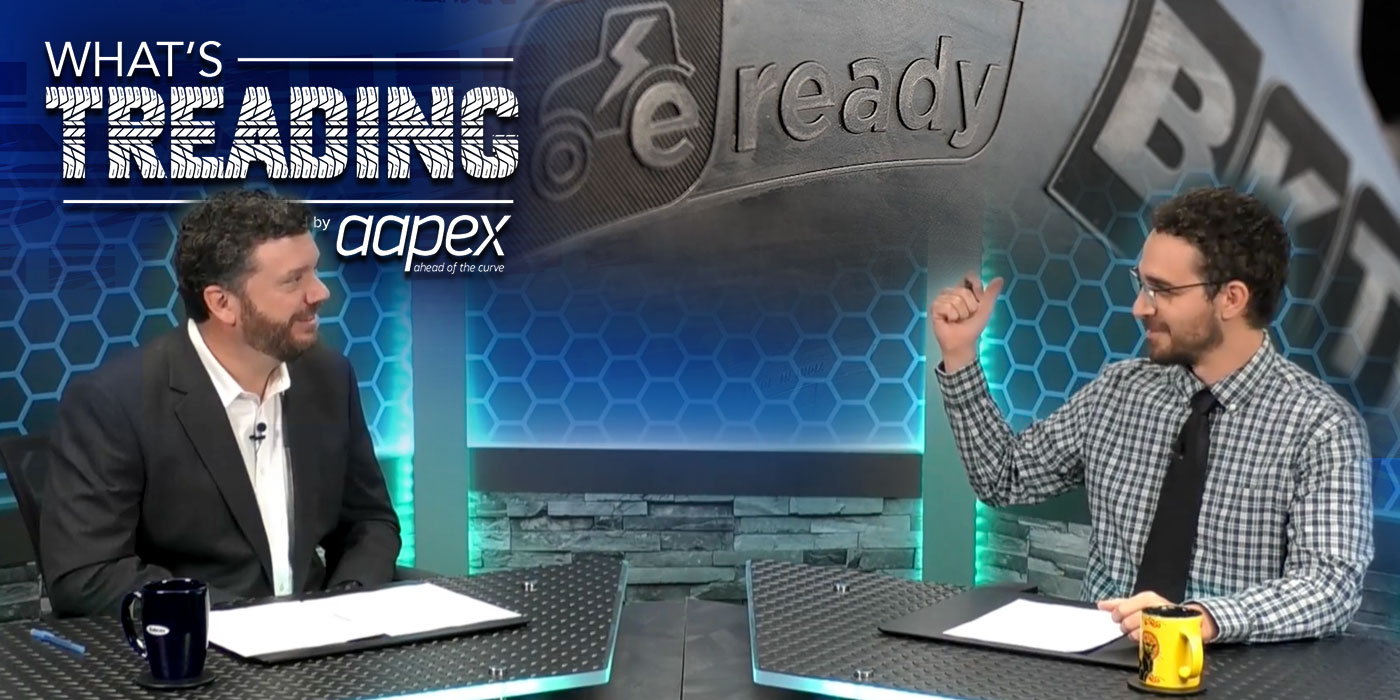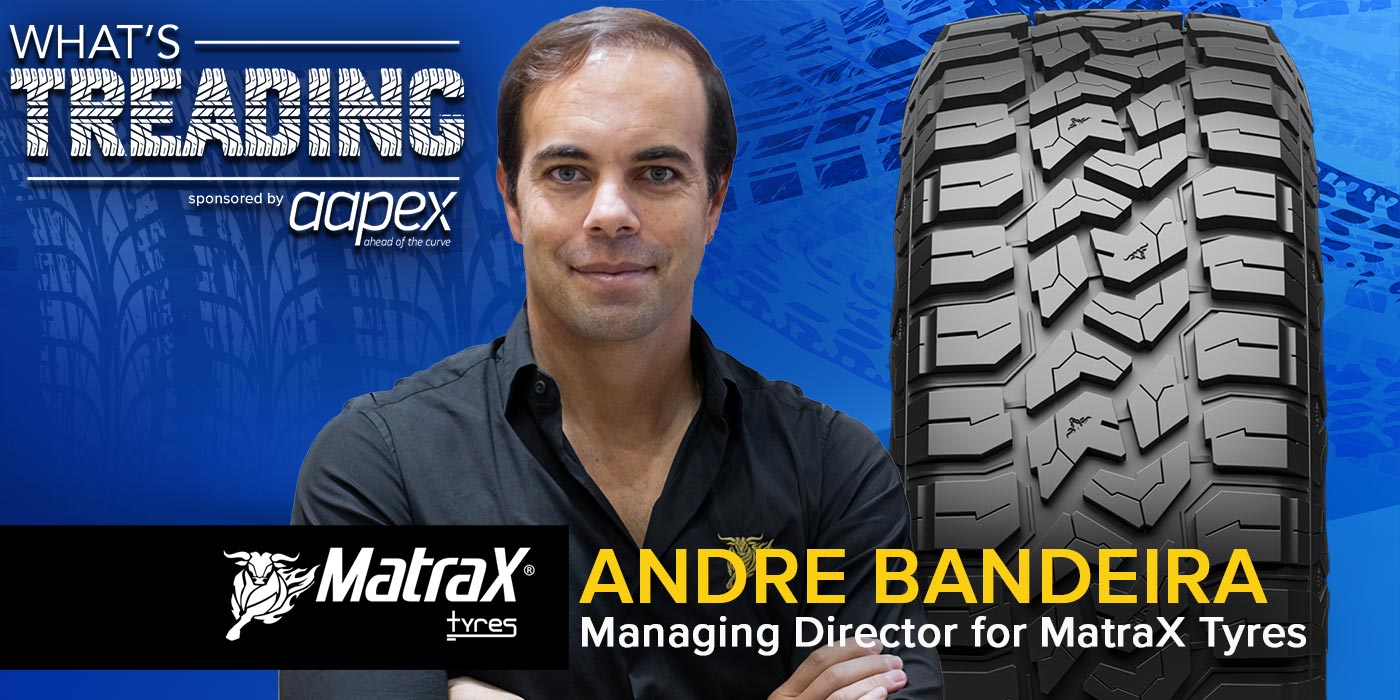I want you to take yourself back to last week, in the kitchen making Thanksgiving dinner. The turkey is in the oven and every burner on the stovetop has a job to do. You’re timing everything perfectly… until your nose tells you otherwise. The beans on the back burner are burning!
This is how Tom Tucker, the Auto Care Association’s senior director of state affairs, describes what’s going on with Right to Repair. There are so many issues going on in the automotive aftermarket – like labor shortages and kinks in the supply chain – and it’s easy to put an ongoing issue like Right to Repair on the back burner for a while. His point is… just don’t forget about it until it’s too late.
In this episode of What’s Treading with Tire Review, sponsored by AAPEX, we speak with Tom to discuss the status of Right to Repair in Massachusetts and Maine. We talk through technical issues revolving around the issue, like cybersecurity, as well as if Right to Repair will be popping up in any other states anytime soon.
Subscribe to the audio podcast on Apple Podcasts, Spotify and Google Podcasts. You can also read the full interview below.
EPISODE OVERVIEW
- What is the status of Right to Repair in Maine? (1:46)
- Are OEMs fighting Right to Repair legislation in Maine? (3:15)
- Would the passage of automotive Right to Repair legislation lead to cyber security issues? (7:55)
- What is the status of Right to Repair in Massachusetts? (8:47)
- What is the best way to support Right to Repair? (11:22)
- Is Right to Repair legislation being introduced in any other states? (16:00)
- Have there been any major Right to Repair victories outside of automotive? (18:00)
David Sickels: Can you catch us up with what’s going on with Right to Repair in Maine?
Tom Tucker: The Right to Repair Committee has filed papers with the Secretary of State, so a question will go on the ballot in November 2023 as long as they get their requisite number of signatures. They’re currently going door-to-door trying to get the signatures. We expect to get 200,000-300,000 signatures and qualify for the ballot.
Once that is complete, in January, the legislature will have an opportunity to have its first look at Right to Repair in the state. If the legislature passes on passing it or defeats it, it’ll go to the voters. We expect the legislature to let it go to the voters.
DS: You said you think you’ll get 200,000-300,000 signatures. What does it take to put together that kind of team to be able to do that?
TT: It’s a whole operation where we hire folk, and their sole job is to go door-to-door, business-to-business, letting people know, “This is the issue. This is the question. Will you support it so we can get it on the ballot?”
DS: Have you seen any countermeasures or strategies from the OEMs to try to prevent or delay this happening in Maine?
TT: Not necessarily in Maine, because it’s still early. This is just the beginning. Overall, the strategy has been to delay, deny, and act like this doesn’t exist. Their central message is that they give us, the aftermarket independent repair shops, all the diagnostic and repair information, and that’s true to an extent. They don’t give us the information, telematically. They don’t give us wireless transmitted data. And that is the new way for new model vehicles to receive information.
I’ll give you a great example. I have a Toyota, and in my Toyota app, every month I get an email from Toyota telling me about the vehicle’s health. So, do I need an oil change? It tells me how much gas I have, the current mileage, things of that nature.
I got an email just last week from the dealership saying, “You’re overdue for an oil change.” Well, I’m not. I have about 3,000 miles before, but they have called me twice. In the email, it says, “Please pick a date. We have all your parts and accessories that you’ll need for an oil change.” And when you think about it, it’s only because they get the data from the manufacturers that they’re able to reach out to me and preemptively get me into the dealership.
Now, I’m in the industry, but four months ago, I got caught and I went to the dealership. I paid $90 for an oil change. That’s $90 for an oil change! What do independent repair shops lose by not having access to this data? Just use me as your example. They don’t know that I’m due for an oil change, so they can’t send me the information to get me into their shop. But the manufacturers send the same information to their franchise dealership and they try and get me into their shop. It creates an opportunity for them to get a customer and get more sales. It denies the independents equal access. It is not a level playing field, and it creates a monopoly for the OEMs in the repair market, just because they have the data on your vehicle.
Now, I’ll simply say this. I own the vehicle. I ensure the vehicle. I pay for it. The data that’s generated is mine. I should be able to dictate that my independent repair shop, whether it’s in Maryland or Canada or wherever, that they are given the data, so they can call me and it’s not going to be $90 for a repair.
I think that one of the big central issues about all of this is this: Even if the OEMs cornered the market, and gave every dealership this information, they don’t have enough service bays to service every vehicle. So really what does that mean? That means, they’re sending me the email, I’m going to the dealership, and now I have to wait or I have to go home. I may not get my car that day. I may not get it the next day. I’m out of my vehicle. I may have to get a loaner, so if I don’t have the loaner in my policy or they don’t offer it, now I have to rent a car. If my children have activities, soccer, basketball, cheerleading, tutoring… if you have one vehicle, what are you supposed to do? It creates an avalanche of effects that negatively affect consumers worldwide, and it gives franchise dealerships a competitive advantage over independent repair shops.
DS: What would you say to critics who say that if Right to Repair goes through, there are cyber security issues that come along with that?
TT: There’s a cyber security risk in everything, and cyber security standards are changing every day. We at the Auto Care Association have already come up with a solution that is cyber-secure. It’s called a Secure Vehicle Interface. All we need is for the OEMs to come to the table because we can show that it’s using the same international standards that they use that show that it’s cyber-secure. All they have to do is try it, but their tactic is to delay, deny, and act like it doesn’t exist. But it does exist.
DS: How about in Massachusetts? How’s the issue doing there?
TT: In Massachusetts, we’re actually doing well. We’re going on the third year of the case. The decision has been delayed seven times – actually, eight, because there was a hearing scheduled today, a status conference. It was delayed until next week.
I take a very different approach. I think the judge is trying to be methodical. I think the judge is looking at very complicated issues and trying to decipher who’s telling the truth. You have experts on one side saying one thing, and experts on another side saying another thing. And these are technical issues. A layman wouldn’t understand. I think most of us in this room wouldn’t understand unless we had someone to break it down. And so, I think the judge is trying to do his own research and come up with a very thoughtful decision that benefits the consumers because the Massachusetts voters have spoken.
I think the judge also doesn’t want his decisions to be overturned in an appeal, so he’s looking at what the larger issues are. The judge also took what I consider the biggest issue off the table, and that’s the issue of whether the ballot initiative is preempted by federal law? He said it wasn’t. And so, the only other issue is cyber security, which we think we have the solution to. And so, I feel – and this is just my opinion – that we’re in a good place. If we have to wait five or six more months to get a decision, that’s fine. But we’re going to get the decision, and the decision will be affirming our position, affirming the will of the voters in Massachusetts, and will give us continued momentum going into Maine.
DS: Five to six more months – do you think that’s an accurate depiction?
TT: I have no idea. I don’t think we know what the judge is thinking. Like I said, these are very complicated issues. And I think the other thing to consider is that, while the judge is looking at these issues today, how is the industry changing every day? What are the cybersecurity standards, security measures, security fixes? How are those changing every day? And so, the longer the delay, the longer the challenge.
DS: What is the best way for somebody who supports Right to Repair to continue to support that and help the cause?
TT: First of all, let me say that Right to Repair used to be a buzzword. It’s now a movement with global momentum across the globe, from Australia to the EU, to Canada, to the United States. And everyone’s looking at the United States as the standard.
What can citizens do? A lot. One: Contact your elected officials. Let them know that you support Right to Repair, specifically “to repair automotive Right to Repair.” Because Right to Repair encompasses so many different industries: automotive, medical devices, cell phones, tablets, agricultural products, appliances… So, we have to be very careful that we don’t get sucked into a vortex of Right to Repair. We have to differentiate ourselves.
So, contact your elected officials, tell your neighbors. If you’re a business owner, tell your suppliers, tell your distributors. We should be talking about Right to Repair every day because most people have a vehicle and it affects everyone that has a late-model vehicle.
Look at the state of California right now. There are 29 million registered vehicles in California and 39 million registered drivers. That’s just in one state. If you do that nationwide, how many millions of drivers and cars are there? And how many people are affected? It affects everyone. It affects the individual driver. It affects those that have fleets: buses, cars, light trucks, heavy-duty trucks. It’s a big sector that’s affected and we need to spread the word. We need to let our elected officials know, let community groups know.
At the Auto Care Association and with our allied affiliates, we are also trying to find traditional and non-traditional allies. You have retail stores like Walmart. We have to reach into the traditional market and the non-traditional markets and spread the word and tell our story, because at the end of the day, we have 4.3 million workers that work in the aftermarket, and no one tells their story better than them. I speak to elected officials every day, and I’m pretty good, I can tell a good story, but I can’t tell your story better than you can. And so, we need them to come to the table and tell their story, put it on video, call them, invite them to their facility to tell them how this will affect them.
We have a member in the state of Maryland, a very well-known repair shop, and one of the senators came to visit their facility last year with the District Director. They saw them at a community fair, and they told them, “We may lose our ability to repair vehicles.” The director said, “What do you mean?” “Well, this issue of Right to Repair, have you heard about it?” “No. Tell me about it.” And they told him about it. Well, the Senator is coming back now, just on this issue, because the senator is very familiar with this repair shop. He is a constituent and he knows they do good work. And that’s the value of the industry speaking up.
We work in an industry where people are working hard. They don’t want credit, they don’t want attention. We just do good work. That’s who we are. But this is an opportunity as well as a situation where we have to stand up and scream from the rooftops, “There’s a fire. There’s a five-alarm fire blazing. The aftermarket, as we know it, could cease to be in existence if we don’t win this battle.”
Now, in Massachusetts, I think we’re winning the battle. In Maine, we’re launching a new front. We have federal legislation that’s pending and a new bill will be introduced. All of those are different battles. They’re all working together to win the war. And that’s really what we’re trying to do, win the war in Right to Repair.
DS: Maine and Massachusetts right now are getting a lot of the spotlight when it comes to Right to Repair. Do you foresee, or would you suggest, looking at any other states right now where things are happening?
TT: It’s a great question. I think people fail to realize there are 60 other state bills that were introduced in 2023 across the country. But they range from agricultural to digital Right to Repair – cell phones, tablets, etc. And so, Right to Repair went from just a buzzword a few years ago to where everyone’s trying to get involved because they see what’s happening in Massachusetts. They see what we’re doing in the aftermarket and they see what’s happening globally.
There’s legislation that’s been introduced to varying degrees of success in New York. A digital Right to Repair bill was passed this year and sent to the governor. I don’t know if the governor signed the bill, but that bill was signed. And so, I could foresee other states. I’ve heard from state organizations or state associations who want to launch in their states, but it’s costly.
That’s one. Two: Do you launch an initiative legislatively or regulatory, or do you do a ballot initiative? All considerations, and there’s a list of things you have to consider before you launch. You can’t just say, “We want to do it.” Is the landscape fertile for success? Do you have supporters in the state? Not just your grassroots repair shops and citizens, but what about the legislative leaders? Committee leaders? That’s pre-work that people don’t realize we do before we launch an initiative. We do a lot of background.
DS: Can you think of any major victories in one of those other sectors that the automotive sector could look to try to emulate?
TT: What’s interesting, even globally, is that everyone’s looking to automotive. They look at the MOU as the standard, and they’re looking at what we’ve done in Massachusetts and they’re trying to emulate that.
I don’t think there’s a lot of opportunity for us to emulate someone else because we are so far out and ahead of other industries. But that doesn’t mean they don’t have successes that we can’t look at. And so, I don’t have an example right now, but I will tell you, everywhere we go, they’re talking about what we do.
I get invited to speak all across the country because everyone wants to know how we’re doing this. Where’s momentum coming from? How did this movement get started 10 years ago? People are looking at us as the leaders, not just of Right to Repair, but as a way forward. And that’s really what all this is about. How do you find a way forward with technology?
Let me just close with this. Anything we can do to talk about Right Repair, we’re always willing to do it. If you really look at the landscape, it’s a global movement, and the momentum is growing. If you look at Halloween next year, the landscape will look completely different because once the genie’s out of the bottle, you can’t put it back in. Citizens across the country, across the globe, are demanding the rights to repair their personal property.
MORE: Check out the latest consumer buying data on major automotive purchases

